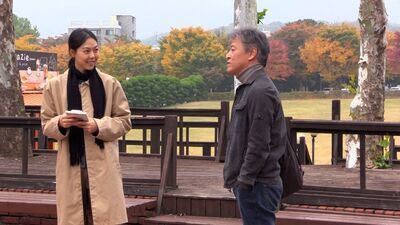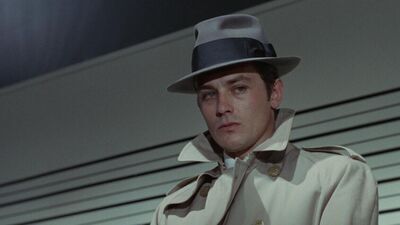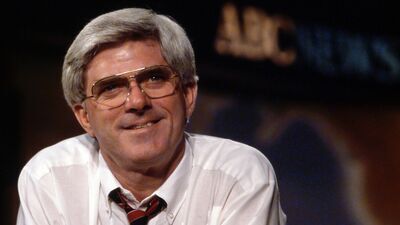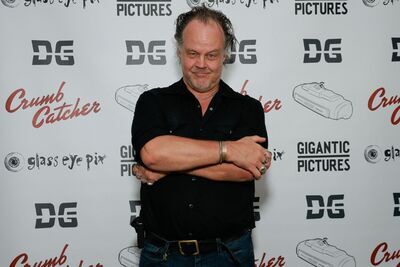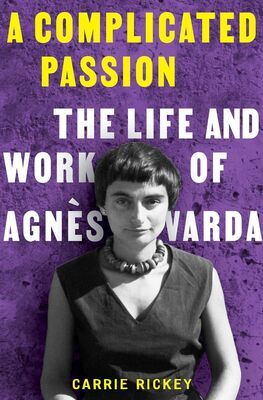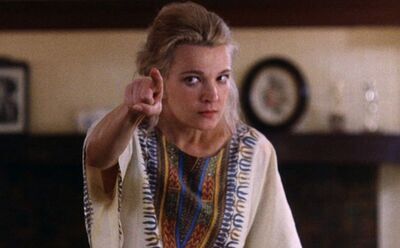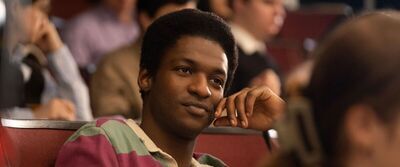
We are incredibly proud to present an excerpt from Carrie Rickey‘s new book about the life and work of Agnès Varda, one of the most important filmmakers in the history of the form. The official synopsis is below, followed by the excerpt. The book is available now, and we’ll have a review soon.
The first major biography of the French filmmaker hailed by Martin Scorsese as “one of the Gods of cinema.”
Over the course of her sixty-five-year career, the longest of any female filmmaker, Agnès Varda (1928–2019) wrote and directed some of the most acclaimed films of her era, from her tour de force Cléo from 5 to 7 (1962), a classic of modernist cinema, to the beloved documentary The Gleaners and I (2000) four decades later. She helped to define the French New Wave, inspired an entire generation of filmmakers, and was recognized with major awards at the Cannes, Berlin, and Venice Film Festivals, as well as an honorary Oscar at the Academy Awards.
In this lively biography, former Philadelphia Inquirer film critic Carrie Rickey explores the “complicated passions” that informed Varda’s charmed life and indelible work. Rickey traces Varda’s three remarkable careers―as still photographer, as filmmaker, and as installation artist. She explains how Varda was a pioneer in blurring the lines between documentary and fiction, using the latest digital technology and carving a path for women in the movie industry. She demonstrates how Varda was years ahead of her time in addressing sexism, abortion, labor exploitation, immigrant rights, and race relations with candor and incisiveness. She makes clear Varda’s impact on contemporary figures like Ava DuVernay, Greta Gerwig, Barry Jenkins, the Safdie brothers, and Martin Scorsese, who called her one of the Gods of cinema. And she delves into Varda’s incredibly rich social life with figures such as Harrison Ford, Jean-Luc Godard, Jim Morrison, Susan Sontag, and Andy Warhol, and her nearly forty-year marriage to the celebrated director Jacques Demy.
A Complicated Passion is the vibrant biography that Varda, regarded by many as the greatest female filmmaker of all time, has long deserved.
Varda freely admitted that her “total ignorance of beautiful films, very old or recent, allowed me to be naïve and cheeky when I launched into the profession of image and sound.” When planning the film that became La Pointe Courte, she was twenty- five years old and hadn’t yet seen twenty- five films, as she often said. She had no knowledge of film history, and thus was unaware that she was one in an illustrious line of still photographers drawn to make pictures that moved, a line extending from Man Ray and Stanley Kubrick to Gordon Parks and Mira Nair. Nor was she aware that at the dawn of filmmaking, many directors were women, and that women were in the vanguard of experimental filmmaking, like Germaine Dulac in France during the 1920s and Maya Deren in the United States during the 1940s.
At the time she made her film, Varda anticipated that her experiment would be a one- off. “I was struck by how literature had made extraordinary leaps and bounds, painting too, but cinema, people said, wasn’t evolving that much.” During the postwar period there were few female directors in France. Most prominent among them were Jacqueline Audry, who adapted Colette’s novels to make Gigi (1949) and Minne (1950); and Andrée Feix, who confected the comedies Once Is Enough (1946) and Captain Blomet (1947).
But it was a propitious time in France to be getting into the business of making films. While Varda attended to the bureaucratic process of getting a movie made, François Truffaut, a twenty- one- year- old cinephile, published his incendiary manifesto, “A Certain Tendency of French Cinema,” in Cahiers du cinéma. He blasted postwar French filmmakers for their script- dependent movies, disengaged and bloodless adaptations of great books that were true to neither the letter nor the spirit of the novels. Even worse, they were not cinematic. Truffaut argued for the cinema of the auteur (author), that of the engaged filmmaker who goes beyond merely illustrating a screenplay to create a unified vision for his movie. Truffaut excoriated films that had a literary pedigree but no personality, lauding those with a distinct directorial signature and eye. “A Certain Tendency” introduced readers to what became known as the auteur theory, a director- centric organizing principle for making films as well as writing about them. Seventy- five years later, the essay’s impact on how movies are made and how they are written about is immeasurable.
While preparing her movie, Varda knew nothing of the influential film journals Cahiers du cinéma and Positif. Nor did she know of the culture of ciné- clubs, which since 1935 had enriched the social and intellectual life of France by screening movies and fostering lively discussions around them, creating a generation of movie lovers and a near- religion known as cinephilia. While she wrote her two- tiered narrative set in Sète, Truffaut, Jean- Luc Godard, and the other “Cahiers boys”— as she would soon dub them— spent their waking hours either at the movies or polishing their theories of cinema.
The “Cahiers boys” dreamed of becoming directors; Varda just did it. “In the beginning,” she recalled of the genesis of La Pointe Courte, “there was almost nothing, no idea about cinephiles or films and no even vague aspiration to enter the world of cinema.” Its creation, she said, “was a mystery . . . or an incomprehensible combination of luck or larval desires.”
There was another, more urgent, desire. Varda’s friend Suzanne Schlegel- Fournier, Valentine’s elder sister, was married to the cellist Pierre Fournier, and he had recently been diagnosed with terminal brain cancer. She and Suzanne suggested “charming projects to occupy Pierre’s mind, including driving down to Sète and filming him for fun.” Varda had three agendas: distracting Pierre; preparing Suzanne to become a photo apprentice so that, in the event of Pierre’s death, she had a marketable skill; and making a movie.
The prior year, Varda had been under the spell of William Faulkner’s The Wild Palms, which, in alternating chapters, tells two parallel stories. She was inspired to construct a like- minded modernist narrative. What emerged was the idea of two stories that occur in the same place: Sète. One featured a community of fishermen whose livelihoods are threatened by polluted waters; the other, an urban couple negotiating a troubled marriage. Fishermen and couple occupy the same spaces yet exist in entirely different worlds. She named the film La Pointe Courte (The Short Tip), after Sète’s fishermen’s enclave surrounded by a tidal pool. Varda returned from Sète with photographs and used them to create a storyboard annotated with drawings and dialogue.
Like professional photography, filmmaking was regulated in France, thus Varda created her own company, Tamaris Films, and registered it with the CNC as a producer of shorts. While La Pointe Courte was feature- length, she could afford only the price of a “short” authorization. At the time, an aspiring director was expected to make shorts, then become an assistant director, and then, after a long apprenticeship, a director of features. Varda asked the CNC for waivers. Thus, La Pointe Courte was considered an amateur production and could not be screened in a commercial cinema.
Before Varda commenced production, she had second thoughts. She stowed the storyboards and script in a drawer, “like stashing away notebooks of poems that no one, we believe, will ever read.” Then she made the acquaintance of Carlos Vilardebó, a Portuguese director of shorts, and his wife, Jeanne, a writer and script supervisor. They advised her how to make a film on the cheap and rounded up a crew who were between movies and ready to rise to the challenge of making a truly independent film.
Varda was forever grateful to the Vilardebós for their confidence in the project, especially when her own wavered. Her first film would be informed by the compositions of classical painting, symbolically rich forms championed by Bachelard, the experimental strategies of modernist literature, and the real- life residents of La Pointe Courte.
Her father had left Varda a modest bequest of 2 million old francs; her mother loaned her 3 million more; and she also borrowed 1.5 million against rue Daguerre. She created a cooperative worth 3.5 million old francs to pay the cast and crew, who deferred payments until the film made money. Historian Richard Neupert estimates the film’s final cost of 7 million old francs was roughly $14,000 in 1954 dollars. As the average French film at the time cost 70 million old francs, Varda said, “We therefore had more than ten times less money and ten times more nerve because, at that time, nobody directed at my age.”
A seasoned still photographer, Varda knew instinctively when to ditch the plan and shoot the serendipitous moment. Since she couldn’t afford to make the film with synchronous sound, she did not have to worry that seagull squawks or other intrusive sounds would interrupt a take and require reshooting. Dialogue would be recorded and added after the film was edited.
When Varda took her first, uncertain, step into filmmaking, she was among supportive friends. No longer the employee, she was the artist employing others. She cast Philippe Noiret and Silvia Monfort as the troubled couple, and real- life fishermen and their families as themselves. Actors and crew stayed in a rented house in Frontignan, near Sète. Varda slept in the garage, next to two rusty bicycles and a used Citroën 2CV bought to transport cast and crew to Sète and film to the lab. She swathed her bed and person in mosquito netting to protect against the scorpions that had staked their claim on the garage.
The documentary component of the film chronicles the real community of fishermen defying agents of the health department by plying their trade without permits. The scripted drama tells the story of a Parisian couple questioning their future. Together, the fishermen fight for survival; estranged, the husband and wife fight each other.
The contrapuntal film toggles between natural light and long shadow, civic victories and personal losses, straightforward documentation and oblique symbolism. When Varda frames a close- up of the couple, heads touching, their faces are at right angles to each other, contemplating different vistas and, perhaps, different futures. Varda’s experimental film could not be compared to other movies. It could be spoken of in terms of the New Novel, abstract painting, and concrete music, as a revolutionary form challenging viewers, readers, and listeners. The film critic Pierre Billard observed that “[Varda’s] first film had all the markings of the avant- garde, but she was the only one who didn’t recognize them. She thought that was how one made movies.”
What binds the dual narratives in the film is the deep- focus photography, with the foreground, middle ground, and background all equally sharp, which draws viewers into the tale of two conflicts. The fishermen’s story was written with the locals, whose performances are naturalistic. The fictional couple’s story, scripted by Varda, is stylized, with verbal exchanges as opaque as those in the nouveaux romans then so popular in Parisian literary circles. The stories do not intersect but superimpose on each other in the way that right and left eyes perceive visual information and integrate the two views into one stereoscopic view.
By the end of the shoot Varda had ten hours of footage, with ambient sound of squawking seagulls, train engines, and motorboats— and a reputation among residents of La Pointe Courte as a cat whisperer. For one sequence, Varda wanted a feline to emerge from a hole, walk along a fence, and then down to the dock. The cat didn’t take direction. So, the director brushed the fence with sausage, but, instead of walking along the fence, the cat licked it. According to Varda, as wide- eyed as her four- pawed actor, she looked deep into the creature’s eyes, promising it mullet for supper if it complied. The next take, she said, was perfect.
When Varda screened the silent footage for her nonprofessional actors, they immediately adopted the film as their own— with one exception. “If it weren’t for those two donkeys,” blurted one fisherman, referring to Monfort and Noiret. “It was clear to those of La Pointe Courte that the film was a chronicle of their neighborhood, their film,” Varda reflected later.
Varda returned to Paris with a stack of film cans almost as tall as herself. Where could she find a film editor who would work for shares in the cooperative, deferring pay like the rest of the crew? The Vilardebós suggested she contact Alain Resnais, a documentary filmmaker and editor for hire, who had made several well- received shorts about artists such as Goya, van Gogh, and Picasso.
When Varda approached Resnais for help, he asked to see her screenplay. Immediately she delivered one to him at his place on rue des Plantes, a fifteen- minute stroll from rue Daguerre. After reading it, the future director of the classic drama Hiroshima Mon Amour (1959) declined politely by letter. “Your research is too close to mine,” he wrote.
But Varda did not take no for an answer. By phone, she entreated Resnais to look at the rushes (unedited footage). Her persistence paid off. They met at the Éclair laboratory in Épinay- sur- Seine, north of Paris, where she could screen the footage free of charge. Given that she had ten hours of footage, Varda expected that Resnais, a laconic figure known affectionately as the Sphinx, would watch three or so. Varda sat four rows behind him in anxious silence.
About ninety minutes into the screening, where the only sounds were the dull buzz of the projector lamp and the metallic whirring of film reels, he stood up and announced, “I think I’ve seen enough.” Varda’s heart nearly stopped. The Sphinx strode to the door in silence. At six foot three, he towered over Varda. Before taking his leave, he said something to the effect that the rushes were very interesting, but that it was too big a job. “I won’t be able to do it,” he said politely. Varda recalled, “He left. I collapsed.”
Resnais surprised Varda with a call the next morning, offering friendly advice. “While I can’t do it, maybe I can help get you started,” he said. For the sake of determining continuity, he explained, “you need to number the rushes.” In the analog age, every foot of processed film had to be manually marked with scene number and take number. Resnais lent her two synchronizers, which track the length of a segment or reel of film, to help with the job. One had a crank, the other a toothed wheel; one crank advanced a foot of film at a time so the negative could be numbered in one- foot increments. Resnais explained that she should start at zero, crank once, and write the data at the frame’s edge. The first frame of scene 25, take one, should be 25– 1– 1. One foot later, 25– 1– 2, etc. For the second take, 25– 2– 1, 25– 2– 2, etc. He instructed her to buy white India ink and a pen with a fine nib. He indicated where to write the numbers. It was a foreign language, but she attended carefully to his tutorial. Soon she would be fluent.
Varda spent mornings, afternoons, and evenings hunched over the synchronizers, like a medieval manuscript illuminator, carefully numbering footage with her fine- gauge pen, cross- eyed from fatigue. “This is a monk’s job,” she thought. It was not unlike retouching the Rodin photos, but this time it was her own work. On the eleventh morning, she phoned Resnais and informed him, “I did what you said. What now?”
“You numbered 10,000 meters in ten days!” he exclaimed. Impressed by her patience and concentration, Resnais agreed to edit La Pointe Courte. He would defer his salary for shares in the cooperative. But, he insisted, she would pay for his lunch and his shift would end by 5 pm daily. Of his terms of service, Varda joked, “Free, yes. Overtime, no.”
He bicycled from his place to rue Daguerre every morning, arriving promptly at 9 am. He parked his bike in the courtyard, removed the clips from his pant legs, and worked until noon, when he took his hourlong lunch break. After lunch he returned and worked until 4:55. His commitment matched Varda’s own. Through him, she learned not just the fundamentals of editing but also its poetry. When he needed an assistant to complete the task, he suggested that Varda hire an editor by the name of Anne Sarraute (who would soon become Resnais’ editor). Initially, Varda did not realize that his assistant was the daughter of Nathalie Sarraute, a leading French writer associated with the nouveau roman. She was well acquainted with the works of the elder Sarraute and became friends with both mother and daughter. Three decades later, she dedicated her 1985 film Vagabond to Nathalie Sarraute.
As he edited Varda’s footage, Resnais remarked, “These fishermen, they remind me of the fishermen in La Terra Trema by Luchino Visconti.” The woman who claimed she had seen fewer than twenty- five films before she made one had never heard of the gifted Italian neorealist filmmaker, nor of neorealism, a film movement focusing on the working class that had emerged in postwar Italy. (Neorealism was likewise a movement in postwar photography, which Varda may have unconsciously internalized.) When Resnais compared her textured shots of characters before plaster walls to those by filmmaker Michelangelo Antonioni (later famous for his films of modern anomie, like Blow- Up), Varda looked at him blankly and asked, “Antonioni who?” Such episodes moved Resnais to educate her in film history. “I would really discover cinema at twenty- six,” Varda said, “while editing my film.”
“He taught me something tremendous,” she recalled. “He wouldn’t try to straighten out this awkward film. He saw that I had laid out a shooting schedule and that I had filmed it without any B roll, with nothing to cut away to . . . no alternatives. It was a radical movie that needed to be radically edited, but with finesse. Which is what he did.”
The film was composed of smooth tracking shots, all the better for the audience to understand the landscape, with just as many abrupt cuts that suggest the unease between husband and wife. Resnais showed Varda how each edit conveyed, or emphasized, a mood. “By scrupulously editing my film, he allowed me to clarify my thoughts,” Varda observed later.
In 1954, female filmmakers were as rare as volcanic lightning. In the U.S., Ida Lupino had directed seven features over the past five years and would direct many TV episodes, but she wouldn’t make another feature film until 1966. In the Soviet Union, Kira Muratova co- directed films with her husband from 1958 to 1967, when she would make her first solo film. Her countrywoman Larisa Shepitko didn’t direct until the 1960s. In Latin America, Venezuelan filmmaker Margot Benacerraf made two striking documentaries, Reveron in 1952 and Araya in 1960. In Japan, actress Kinuyo Tanaka directed six films between 1953 and 1962, coincidentally the same number as Varda between 1954 and 1962. For all women, the barriers to becoming a director were high, usually requiring a diploma from a film program, as Benacerraf and Muratova had earned. Lupino and Tanaka were well- known actresses who had the respect and support of established film directors in their respective countries (and Lupino’s husband was also her producer). Varda had a small inheritance and property, so she could self- finance a film.
Despite her ignorance of cinema history and practice, Varda had much in common with Resnais, including a passion for painting, especially Surrealism, and a liking for Nadja, André Breton’s dreamlike 1928 novel of a man’s affair with a young woman.
Resnais introduced Varda to the Cinémathèque française, the Notre Dame of cinephilia. He encouraged her to see films by F. W. Murnau (Sunrise), Jean Renoir (The Rules of the Game), and Joseph Mankiewicz (All About Eve). Afterward, they would discuss them. When Resnais learned that Mankiewicz’s The Barefoot Contessa was to open in Belgium before France, he persuaded Varda’s brother Jean to drive them to Brussels to see it before anyone in Paris. Varda had been under the impression that film exhibition was like that of art, traveling from museum to museum, rather than like that of magazines, simultaneously distributed to multiple outlets. Resnais explained how film distribution worked and showed her how to track box office returns.
“Besides having me go from raw filmmaker to beginner filmmaker,” Varda said of Resnais, “it was through him that Paris became exotic. Its Chinese restaurants, its Jewish quarter, the green ribbon of the former circular train, and the Parc des Buttes- Chaumont” in Paris’s northeast corner. There was also a trip to Venice, where the elder filmmaker introduced the newbie to the colors and atmospheres of Tintoretto’s paintings. Resnais accompanied her to the Cinémathèque française on an outing she described in her memoir as a “double baptism.” It was her first time at that cathedral of cinema. The film was Vampyr, by Carl Theodor Dreyer.
Varda would later admit to Jean- Luc Douin, a French journalist and author of a 2013 book on Resnais, that she was “half in love” with the Sphinx. And he was equally fond of her, according to Varda’s daughter. Their mutual regard was more than platonic. They had a non- exclusive relationship of roughly two years, suggesting that Valentine Schlegel and Varda also had an open arrangement. She and Resnais remained close friends— and Resnais her cultural consigliere— but saw each other less frequently after 1959, when he released Hiroshima Mon Amour and Jacques Demy moved into rue Daguerre.
One evening in late 1954 or early 1955— Varda remembered it as cold and wintry— Resnais invited her over. In her telling it isn’t clear whether she was expecting a soirée or an assignation. Dressed for the season, she walked to rue des Plantes in the bitter cold.
If she expected to find him alone, she was disappointed. When she arrived at the book- filled apartment festooned with Dick Tracy and Li’l Abner comic strips, Resnais was holding court on his bed in a cloud of smoke from unfiltered cigarettes. Six or so men unknown to her were clustered around him, sitting on chairs or cross- legged on the floor. Between drags on cigarettes, they talked to and over one another about movies, trying to impress Resnais.
He introduced her around, but it would take Varda time to distinguish Claude Chabrol from Jean- Claude Brialy, Jean- Marie Scherer— known as Éric Rohmer— from Jean- Luc Godard, and François Truffaut from Jacques Doniol- Valcroze. They were editors and writers from Cahiers du cinéma, the influential film journal. Unlike her, they had an encyclopedic knowledge of film history. Listening to them talk about lighting, editing, and camera movement, Varda was uncharacteristically mute.
“They quoted thousands of films and suggested all sorts of things to Resnais, talking so fast that they lost me,” she recalled. “I was an anomaly, feeling small, ignorant, the only girl among the Cahiers boys.” When she knew the men a little better she realized that “their influences were movies.” Hers, she said, were, “paintings, books . . . life.”
The depth and breadth of their film knowledge intimidated her. A year later, when her debut film had a limited run in Paris, her formidable intellect— and, no doubt, the fact that she had completed a feature before any in their brotherhood— would have a similar effect on them.
While Resnais and Sarraute condensed six hundred minutes of footage down to ninety, Varda dealt with the challenge of distributing her film, as she was still registered as a producer of shorts and lacked the capital to change her status to that of producer of features. And she thought her unusual film lacked the commercial potential to attract an outside distributor. Theatrical distribution of La Pointe Courte was not in the cards.
Resnais recommended that Varda screen the film for André Bazin, the founding editor of Cahiers du cinéma and an eloquent proponent of cinema as art. Bazin wrote favorably of La Pointe Courte in several outlets, praising its realism and artisanal mode of production. He also provided Varda with a road map of self- distribution. She should organize a private screening of the film at the Cannes Film Festival, advertise the screening in the trade paper Le film français, and then invite critics and industry figures to see it.
A few weeks before her twenty- seventh birthday in May 1955, Varda borrowed money from her mother so that she could rent a theater in Cannes and screen La Pointe Courte at the festival market (as opposed to the competition, where Delbert Mann’s Marty won the top prize). She took a third- class train from Paris to Cannes, carrying the film reels in a suitcase.
The first review was unpromising. “Main aspect of this film is that it was made for $25,000 by a 25- year- old girl,” wrote a reporter from Variety, the Hollywood trade paper. But Varda’s birthday gift would arrive, if a little late, on June 5, in the form of an extended piece by Jean de Baroncelli in Le Monde, the center- left Paris daily. It was not a review, but a thoughtful reflection on cinema that hailed the film as
the first work of a talented young woman. . . . [La Pointe Courte] is also the first chime of a huge carillon. . . . [It] proves to us that for the generation to which Miss Varda belongs, cinema has become a means of expression just like the pen and the brush. This means of expression is unfortunately very expensive and this is why, with rare exceptions, it remains the business of specialists. We are still in the time of the mandarins. However, it is not forbidden to hope that, with the help of television, all these young talents reduced to silence will one day find the opportunity to come forward. We will then have the poems, essays, stories, cinematographic memories. The cinema will no longer be a heavy machine for making entertainment, but a mirror in which the most diverse temperaments and styles will be reflected. . . . We are not there yet! But I thought about that future as Miss Varda’s film unfolded.
A week later, La Pointe Courte screened at the Cinéma du Panthéon, the storied art house in the Latin Quarter. Its owner, Pierre Braunberger, producer of several Resnais shorts, had seen the film with Bazin and was an admirer. By the following January, Varda’s film was playing Tuesday nights at the movie theater Studio Parnasse on boulevard Raspail, followed by a public discussion. Like a theater ingenue in the wings watching the audience arrive, Varda holed up in the projection booth that first Tuesday, perched on a stool, peeping out the tiny window to see, one by one, “the cream of the intellectual set” file in. Novelist Marguerite Duras, filmmaker Chris Marker, Nathalie Sarraute, and François Truffaut were among them.
Varda had stage fright. During the discussion, she stayed in the booth, eavesdropping. She heard Truffaut express his surprise that she wasn’t among them. “I’m sure she’s hiding somewhere, listening to us,” he guessed shrewdly. Then Marker, whom Varda knew through Resnais, piped up, “Did anyone notice that there is one element associated with him and another with her?” He told the audience that when Noiret was on- screen, there were objects and sounds of wood. And when Monfort was on- screen, there were metal objects seen and metallic sounds heard. Varda was stunned. Marker understood that these materials and sounds were her way of personifying the characters without dialogue. Noiret, playing a man born in Sète, was connected with the material used in pre- industrial times; Monfort, whose character was from Paris, was linked to steel, the material of the Industrial Revolution.
Varda felt understood by Marker and de Baroncelli. Creating her own film felt more personal than interpreting Vilar’s theater productions in photographs. It was heartening to be called the first bell of a generational carillon. To paraphrase a 1957 Jean- Luc Godard review of a Roger Vadim film, substituting Varda’s name for his, perhaps it is pointless to compliment Varda on being ahead of her time when she was on time and everyone else was late. Still, for years she was not considered a forerunner of French New Wave cinema, never mind one in the rising generation redefining French films.
Not everyone was enthusiastic about La Pointe Courte. Truffaut, whose often harsh reviews earned him the epithet of “the gravedigger,” gave the film a mixed critique. He admired Varda’s “earnest and intelligent work,” but criticized the self- consciousness of the actors and the film’s “too- composed” framing. In an ad hominem crack, Truffaut noted the director’s resemblance to her leading man (both had bowl haircuts) and characterized Varda as a “very cerebral filmmaker.” Neither was a compliment. Five years later, Truffaut recanted, admitting that La Pointe Courte “is an admirable film which we were very unfair to at the time.”
University of Wisconsin film scholar Kelley Conway, who wrote a 2015 study of Varda’s work, later noted that “for a film that never received a traditional theatrical release, La Pointe Courte generated an extraordinary amount of attention, largely positive.”
Initially, the term “New Wave” was demographic. In 1957, Françoise Giroud, a founding editor of L’Express, a newsweekly like Time magazine, sent a series of questionnaires targeting the generation between eighteen and thirty years old. This was the cohort that had not finished high school by the end of World War II. The answers indicated that the respondents were “more inward- looking and hedonistic, less political and collective” than their elders, foretelling a significant social and cultural shift. In her summary of the findings, Giroud called this generation the New Wave.
France saw the political clout of this rising generation in 1958 with the election of Charles de Gaulle as the first president of the Fifth Republic. With de Gaulle’s victory came his appointment of the novelist André Malraux as minister of culture. Malraux called for a “rejuvenation” of the film industry and sought, as film historian Richard Neupert observed, “to drop the notion of guaranteed subsidies based on box- office results of completed films in favor of loans, or ‘advances on receipts,’ to producers,” which would be reimbursed to the CNC before producers could earn profits. The new system would become a popular financing instrument for New Wave films.
La Pointe Courte had its brief run in 1955, four years before the 1959 releases of Truffaut’s The 400 Blows and Resnais’ Hiroshima Mon Amour, widely considered the first New Wave films. The exclusion of Varda as a filmmaker of the movement was one of her first erasures from film history. In 1959, when Cahiers du cinéma held a roundtable with Resnais and Hiroshima screenwriter Marguerite Duras, many critics who participated credited Resnais with La Pointe Courte, even though he was its editor. This was Varda’s second erasure.
Some maintained that a New Wave filmmaker had to have started his career at Cahiers du cinéma and evolved into a writer- director, like Chabrol, Godard, and Truffaut. Others allowed that there was a relation between “the Cahiers boys” and the “Left Bank group” of Marker, Resnais, and Varda, who were more overtly experimental, political, and, well, lived on the Left Bank.
It wasn’t until 1965 that French film historian Georges Sadoul corrected the record by stating that La Pointe Courte was “certainly the first film of the New Wave.” Though she was roughly the same age as most New Wave filmmakers, writers variously called Varda its mother, godmother, or grandmother. Her cost- saving strategies— filming on location in natural light, not adding sound and dialogue until postproduction— were adopted by others in the New Wave.






